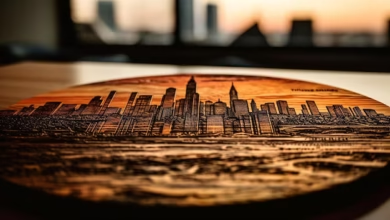https : //mega.nz/folder/7eua3blb

The fashion industry – with its dazzling creativity, its explosive growth, and its massive footprint on our planet – could use a little more ethical decision-making. It’s an industry noted for trendsetting, glamor, and, more recently, a growing awareness around the environmental and human cost of our clothes. The term “ethical fashion” has seeped into our cultural lexicon, capturing the zeitgeist of a more conscious consumer. But what does ethical fashion truly mean? And, more importantly, how can you, as an individual, incorporate it into your personal style and shopping habits?
Understanding Ethical Fashion: More Than Just a Trend
Before we can don ethical fashion, we must first understand its underpinnings. At its core, ethical fashion is a systemic approach to the life cycle of clothing, branching off into social, cultural, environmental, and economic spheres. It encompasses the full spectrum of the industry, from the farmers who grow the cotton to the sewers who piece the garments together, to the consumers who champion the final product.
Ethical fashion stands in direct opposition to the fast fashion cycle that has come to dominate the industry in recent decades. It advocates for slow, sustainable practices that take into account the impact on people and our planet. This means fair wages, safe working conditions, reduced carbon footprints, and an aversion to exploitative labor and environmentally harmful practices.
Starting with Transparency
Transparency within the fashion industry is a vital first step towards achieving ethical goals. It is about being honest and open about each step in the production process, sharing information on where, how, and by whom a garment is made.
Many fashion brands are beginning to lift the veil, using third-party certifications, supply chain tracking technologies, and public commitment statements to showcase their transparency. This new era of openness is empowering consumers to make better choices, knowing the backstory of their clothing. By seeking out brands with a transparent supply chain, you can ensure that your wardrobe aligns with your ethical values.
Materials Matter: The Fabric of Ethical Clothing
One of the cornerstones of ethical fashion is choosing materials that minimize environmental impact and prioritize worker well-being. Look for garments made from organic, natural fibers or innovative recycled materials. Organic cotton, hemp, linen, and Tencel are just a few options that are both eco-friendly and kinder to your skin.
Be wary of buzzwords like “green” and “sustainable” without any meaningful backup. Instead, focus on labels with clear standards and certifications, like Global Organic Textile Standard (GOTS) for organic fibers or Oeko-Tex for safe textiles. These materials are not only better for the earth but often signify better working conditions for the people who produce them.
Labor Laws and Fair Trade
How can we enjoy fabulous fashion while ensuring the people who make our clothes have fair working conditions? The answer lies in seeking out companies that are dedicated to fair trade and labor laws. Brands that pay a living wage, offer safe environments, and prioritize the well-being of their workers are essential allies in the pursuit of ethical fashion.
Organizations like Fair Trade USA and the Fair Wear Foundation help consumers identify these brands by certifying those that meet their stringent standards. By supporting these companies, you are investing in a fashion future where people’s rights are as important as profits.
The Lifecycle of Your Clothing
The lifecycle of a garment doesn’t end when it reaches your wardrobe. In fact, the true environmental and ethical impact of a piece of clothing can be more about its lifespan and afterlife than its production. Taking good care of your clothes, repairing them when they’re worn, and considering their end-of-life destination are all crucial steps in practicing ethical fashion.
Extend the life of your clothes by washing them less, using environmentally friendly detergents, and opting for air-drying. Invest in pieces that are well-made and timeless, and when the time comes to say goodbye, find ways to upcycle or donate your garments.
The Role of Upcycling and Thrifting
The rise of thrifting and upcycling has been a game-changer in the move towards ethical fashion. Shopping second-hand not only reduces the demand for new clothes but also gives old items a second chance to be loved. Upcycling takes this a step further, transforming old, unwanted garments into something new and modern.
Don’t underestimate the treasures that can be found in thrift stores, vintage shops, or online marketplaces. These pre-loved pieces often carry a rich history and unique style that can add character to your wardrobe in a sustainable way.
Personal Style and Ethical Expression
One of the most beautiful aspects of ethical fashion is the opportunity to express your unique style while supporting your values. Ethical clothing is about more than just being good; it’s about feeling good. It’s a chance to tell a story through what you wear, connecting with the people and processes behind your clothes.
Finding your personal style within ethical fashion can be a process of exploration and discovery. Experiment with different materials, silhouettes, and colors to find what resonates with you. Remember, the most sustainable wardrobe is the one you’ll love and wear for years to come.
Overcoming the Obstacle of Cost
It’s an unfortunate reality that ethical fashion often comes with a higher price tag. The true cost of paying fair wages, using sustainable materials, and investing in quality is reflected in the retail price. However, there are ways to make ethical shopping more accessible.
Consider the cost per wear rather than the upfront price. Investing in a high-quality piece that will last for many seasons can often be more cost-effective than buying several cheaper, lower-quality items. Additionally, take advantage of sales, thrift stores, and swapping clothes with friends to build your ethical wardrobe without breaking the bank.
The Ripple Effect of Ethical Choices
Every garment in our wardrobe is a vote for the kind of world we want to live in. When we choose ethical fashion, we’re not just making a personal statement; we’re contributing to a global movement. Our individual choices have the power to create a ripple effect, inspiring others to take a closer look at their own consumption habits and pushing the industry towards more sustainable practices.
Share your ethical fashion journey with others, advocate for change, and support brands that are leading the way. By amplifying the message and the market for ethical clothing, we can accelerate the shift towards a more responsible and responsive fashion industry.
Wrapping Up
In conclusion, ethical fashion is not a destination but a continuous journey of learning, choosing, and growing. It’s about being mindful of the impact of our clothing and making decisions that align with our values. While the path to a fully ethical wardrobe may seem daunting, every step – no matter how small – makes a difference. Start today, and watch as your fashion choices transform into a force for good.



